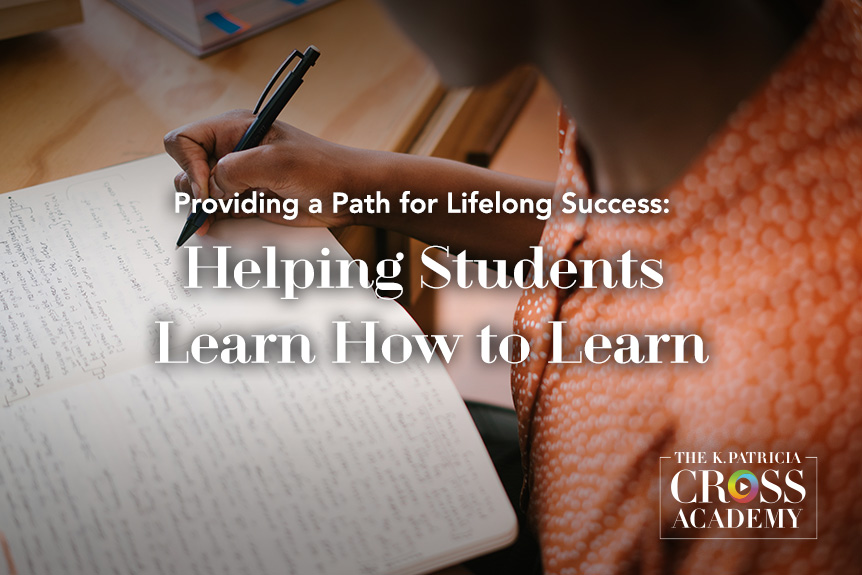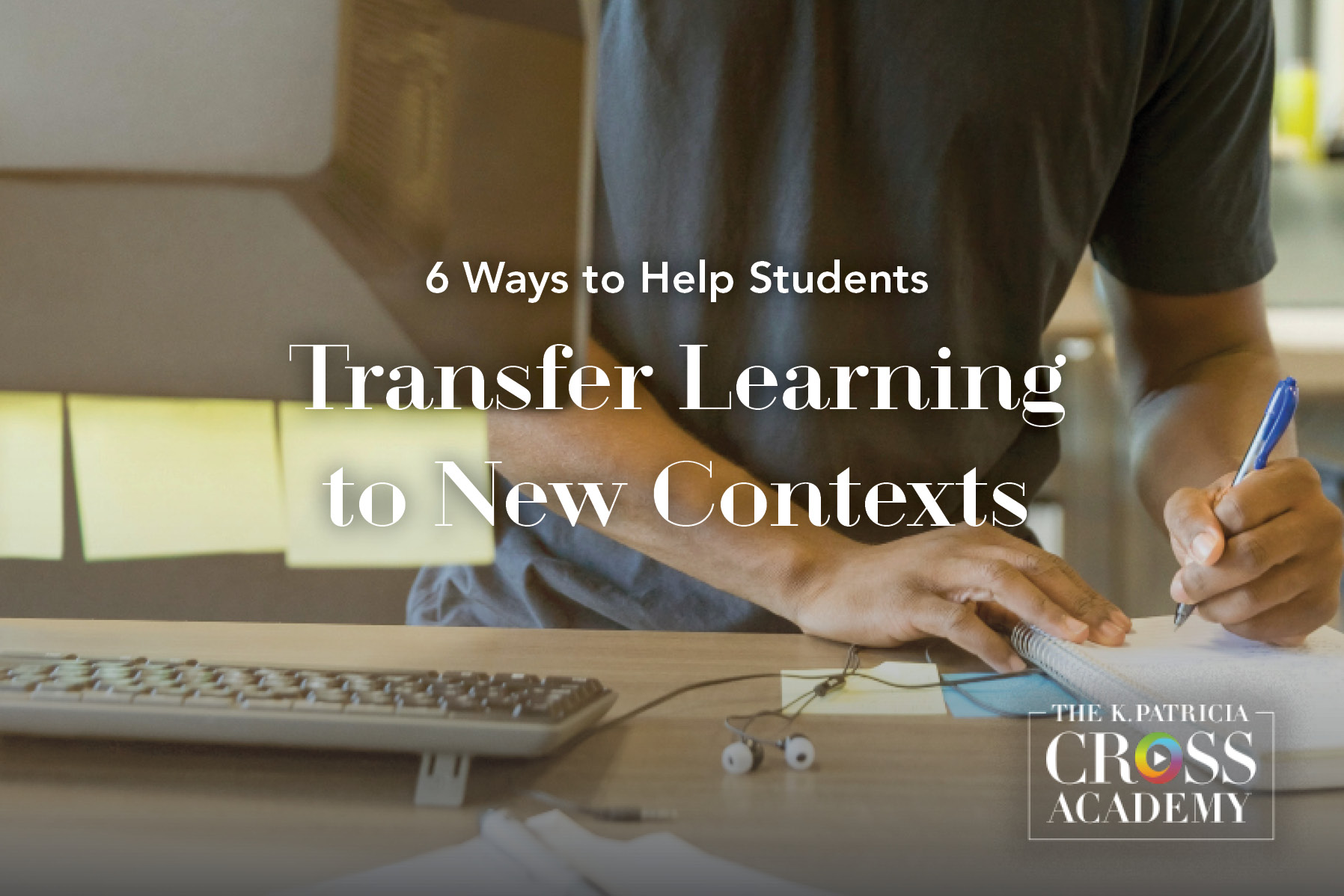
As college teachers, we want students to be able to take what they have learned and apply it in a different context. This phenomenon is called the Transfer of Learning, and it involves the application of skills, knowledge, and/or attitudes that were learned in one situation to another learning situation. Every student can benefit from learning in a way that supports the integration of new knowledge and skills into their existing knowledge base. Transfer of Learning allows learners to comprehensively apply new skills and information to future tasks and decision-making.

Svinicki (2004a, p. 99) notes that there are many types of transfer, but the following four are important for teaching and learning. The first type is Positive and Negative Transfer. If the connections our brain makes between new and existing understandings are accurate, the search results in positive transfer that can aid us in integrating new learning. If, on the other hand, the connections are incorrect, the result is negative transfer, which creates confusion and errors.
Positive Transfer: Transfer that occurs when previous learning helps learning.
Example: Learning to drive an automatic Volkswagen would be helpful for learning how to drive an automatic BMW. These two German cars have many similar features.
Negative Transfer: Transfer that occurs when previous learning hinders further learning.
Example: Driving on right-sided vehicles hinders learning to adapt on left-sided vehicles.
The second type of transfer is near versus far transfer, which refers to the type of task. Near Transfer occurs between tasks that look very much alike and follow the same rules for responding, while a far transfer task is where the same rules apply, but the rules are transferred to a different setting. Far transfer requires us to think more than near transfer.
Near Transfer: Transfer of knowledge between similar contexts.
Example: If the original learning task involved adding two-digit numbers, near transfer might involve adding three-digit numbers
Far Transfer: Transfer of knowledge between dissimilar contexts.
Example: If the original learning task involved number problems, far transfer might involve word problems
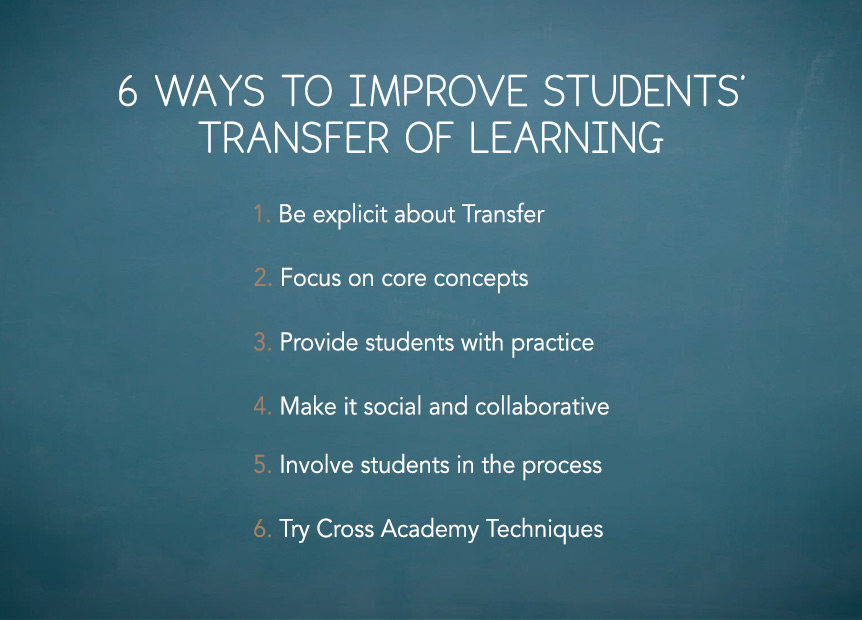
To ensure that students show they can apply what they learn, consider the following suggestions:
1. Be Explicit about Transfer
When engaging students in activities to promote the application of knowledge in new contexts, make learning goals and expectations clear. Doing so will allow students to recognize why they are doing what they are doing, as well as what it is they are to do. They are more likely to willingly engage if you explain the benefits of transfer for future learning and even career aspirations.
2. Focus on Core Concepts
Students will more effectively apply knowledge when they comprehend the critical principles behind the content and skills that they need to use. Develop activities that help students foster a deeper understanding of relationships, shared functions, or similar organizing principles prior to asking them to apply course material in new contexts.
3. Provide Students with Practice
Students develop the ability to transfer learning through practice. One way to provide such practice is to present two different cases, problems, readings, etc., and ask students to find a single approach for analyzing or solving each. Alternatively, you can ask students to construct a different case or problem that requires the same skills and knowledge as an assignment they completed previously.
4. Make it Social and Collaborative
Application of knowledge can be particularly effective when it is done in a cooperative social context that allows peers to develop explanations, provide each other with feedback, and share responsibility for learning.
5. Involve Students in the Process
Students will be more invested in transferring what they have learned if they are called upon to mindfully and explicitly search for ways to make connections, to classify, sort, and so on. Likewise, they will be more invested if called upon to self-monitor their progress and success in applying information in new ways. Self-reflection and self-assessment are great tools for accomplishing this goal.
6. Try the Following Cross Academy Teaching Techniques to Help Students Transfer Learning:
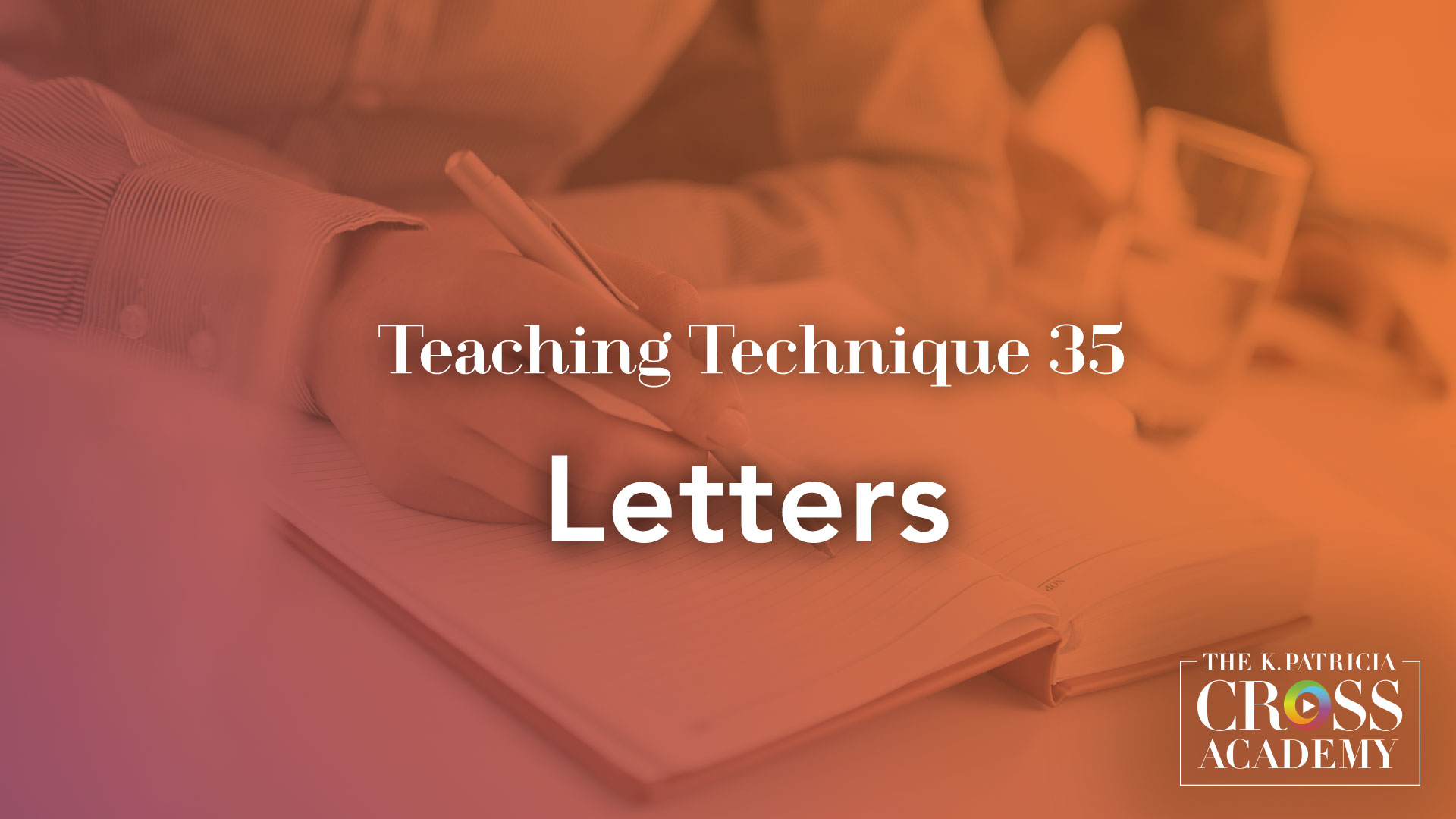
Letters
Students assume the identity of an important person in your discipline and write a letter explaining their thoughts on an issue, theory, or controversy to another famous person who holds a different perspective.

Case Studies
With Case Studies, student teams review a real-life problem scenario in depth. Team members apply course concepts to identify and evaluate alternative approaches to solving the problem.
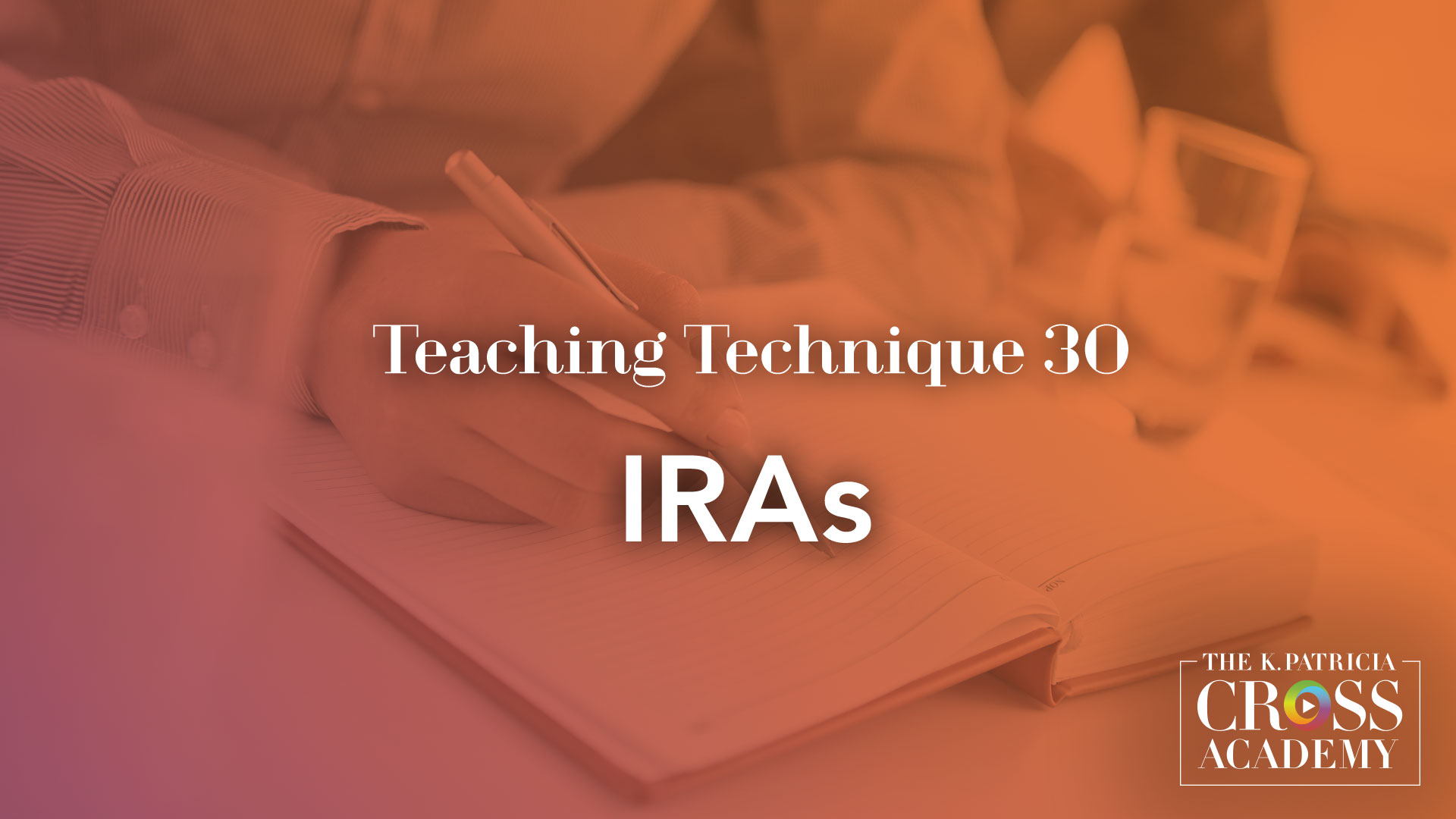
IRAs
When using IRA’s, students complete a written response to a reading assignment that includes three components: 1) Insights, 2) Resources, and 3) Application.

Variations
Students create an altered version of the original, such as rewriting the ending of a story or imagining the consequences of a changed event in history.
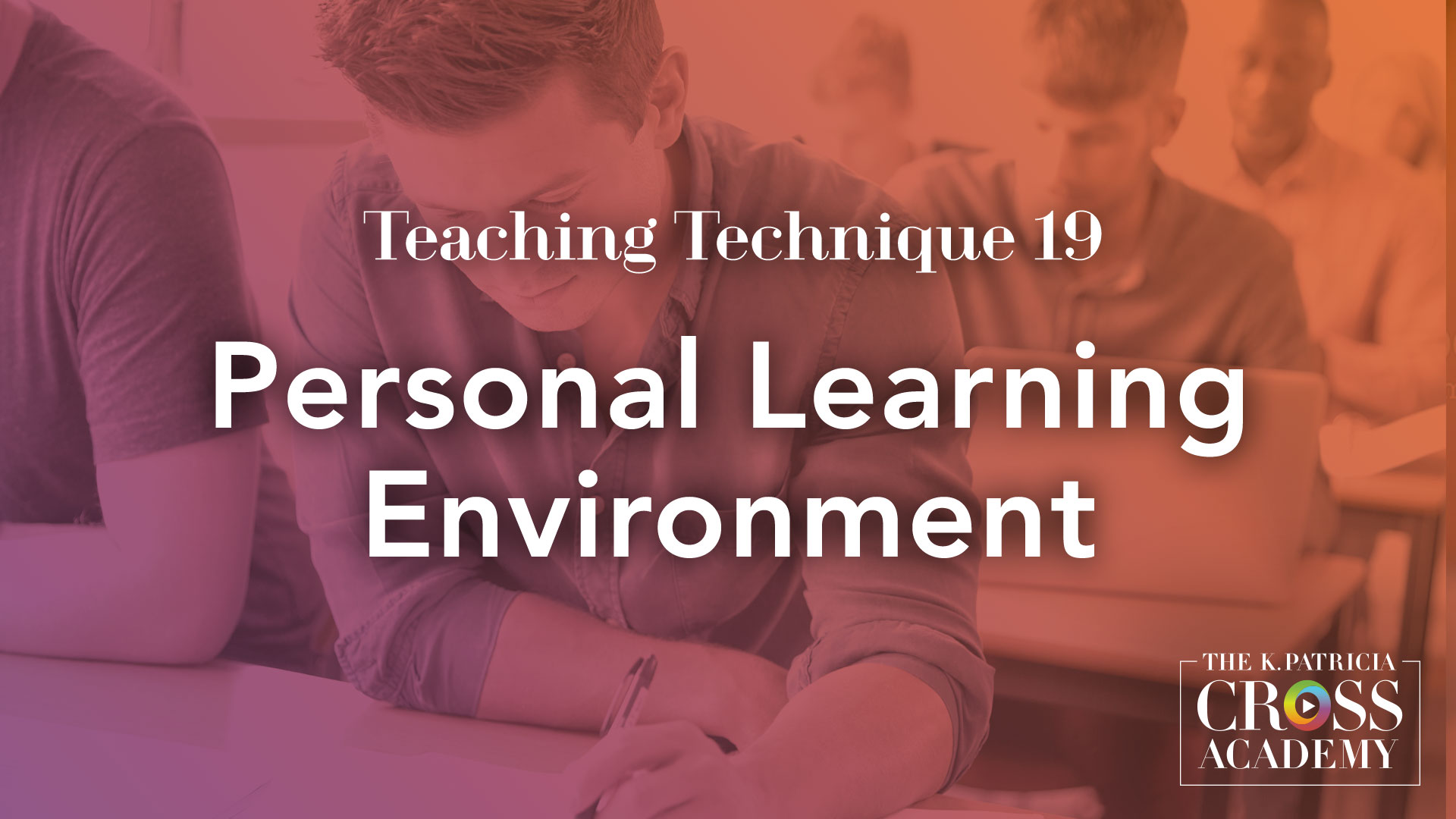
Personal Learning Environment
A PLE is a set of people and digital resources an individual can access for the specific intent of learning. Students illustrate the potential connections through a visible network of the set.
Though developing foundational knowledge will always play an important role in education in a classroom, developing the skills to be able to use this knowledge in new contexts is essential. Moreover, students will learn more effectively if they are taught a topic in depth and from different angles, as opposed to through rote memorization and repetition alone. Because of this, we know that deep and meaningful learning promotes better transfer. We can use this to our advantage. Ideally, we would take a “less is more” approach, focusing on a smaller number of topics and learning them in depth. This approach could give the students more time to spend with each topic, ensuring a higher chance they apply what they’ve learned in the future. In addition, by coming at the same information several times and in different ways (discussions, group work, board work), we are raising the chance that the students will have a deeper understanding and that the knowledge will be well organized in their minds. For these reasons, we encourage you to keep the notion of transfer in mind while you develop and teach your courses.
Sign Up for Our Newsletter
Enter your email below to receive information about new blog posts.
Reference:
Barkley, E. F., & Major, C. H. (2020). Student Engagement Techniques: A handbook for college faculty. San Francisco: Jossey Bass/Wiley.
Suggested Citation
Barkley, E. F., & Major, C. H. (n.d.). 6 ways to help students transfer learning to new contexts. CrossCurrents. https://kpcrossacademy.org/6-ways-to-help-students-transfer-learning-to-new-contexts/

Engaged Teaching
A Handbook for College Faculty
Available now, Engaged Teaching: A Handbook for College Faculty provides college faculty with a dynamic model of what it means to be an engaged teacher and offers practical strategies and techniques for putting the model into practice.





